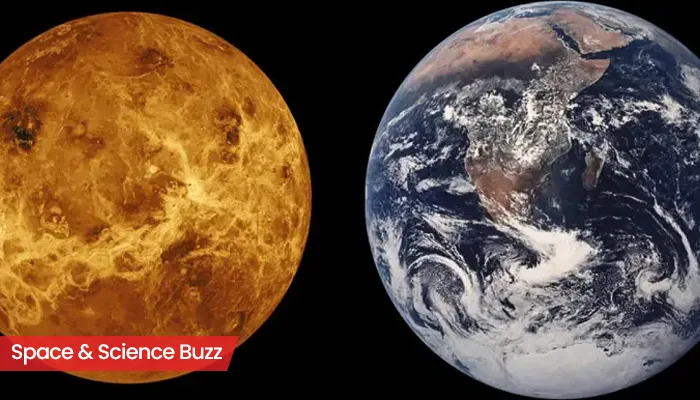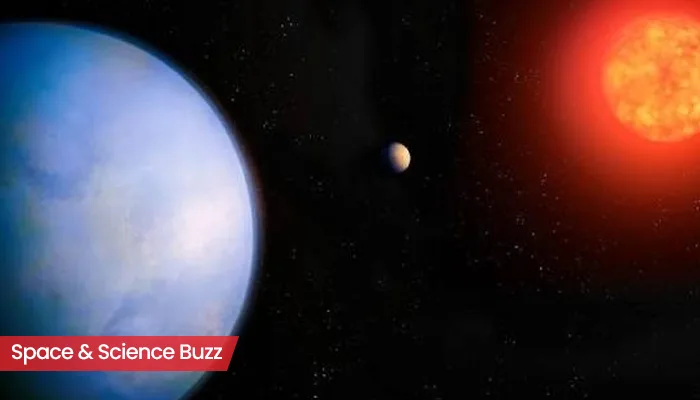
Here are today’s most important updates from the realm of Science and Space.
A Walk Among the Stars: Sunita Williams Returns to Spacewalk Glory
.@Astro_Suni ingresses the station's S0 truss structure to access bolts and begin replacing hardware that helps maintain station orientation. pic.twitter.com/718szUYUyu
— International Space Station (@Space_Station) January 16, 2025
(Credit - X/@Space_Station)
NASA astronauts Sunita Williams and Nick Hague embarked on a spacewalk outside the International Space Station (ISS) on January 16, 2025. This mission, designated US Spacewalk 91, is Williams' eighth career spacewalk and Hague's fourth. The primary objective of this spacewalk is to replace critical hardware and repair the Neutron star Interior Composition Explorer (NICER) X-ray telescope. In addition to the NICER repairs, Williams and Hague also performed several maintenance tasks, including removing outdated radio communication equipment and collecting microbial samples from the ISS’s exterior. Williams and Hague are scheduled for a second spacewalk on January 23, 2025, where they will continue their work on ISS upgrades.
Cabinet Greenlights Rs 3,985 Crore for ISRO's Third Launchpad in Andhra Pradesh

The Union Cabinet on Thursday approved the establishment of a third launch pad at Indian Space Research Organisation (ISRO)'s Satish Dhawan Space Centre in Andhra Pradesh's Sriharikota, with an investment of ₹3,985 crore, Union minister Ashwini Vaishnaw announced. According to a government statement quoted by PTI, the project aims to establish launch infrastructure at Sriharikota, Andhra Pradesh, for ISRO's Next Generation Launch Vehicles (NGLV) and also serve as a backup for the second launch pad. The third launch pad will be designed to support not only Next Generation Launch Vehicle (NGLV) but also Launch Vehicle Mark-3 (LVM3) vehicles with a semi-cryogenic stage, as well as scaled-up configurations of NGLV, ensuring maximum adaptability.
World’s First 3D Map Found—Dating Back 13,000 Years

(Credit - X/@AncientEpoch)
Researchers from the Mines Paris PSL Centre of Geosciences and the University of Adelaide have discovered what may be the worlds oldest three-dimensional map within a quartzitic sandstone megaclast at the Segognole 3 rock shelter in the Paris Basin. This new finding, which dates back approximately 13,000 years, adds a new dimension to our understanding of Paleolithic human ingenuity. Researchers explained that this discovery is not a map in the modern sense, which emphasises distances and navigation. Instead, it represents a three-dimensional model illustrating the functioning of the landscape, including runoff from highlands into streams and rivers, as well as the convergence of valleys leading to lakes and swamps.
12.9 Billion-Year-Old Black Hole Targets Earth with Powerful Beam Across the Cosmos

Astronomers have stumbled upon a supermassive black hole, located a whopping 12.9 billion light-years from Earth, and it's doing something pretty spectacular. The "blazar" is firing a super-powerful beam of energy straight towards us. Meanwhile, supermassive black holes with powerful jets of high-energy particles, pointing directly at Earth are called blazars. Named J0410-0139, the black hole has a mass of about 700 million Suns and is one of the oldest of its kind that scientists have ever observed. The discovery raises questions about how supermassive black holes grow so rapidly in the Universe's infancy. Up until now, a little less than 3,000 blazars have been discovered but most are located closer to Earth.



.webp)
.WEBP)
.WEBP)
.webp)
.webp)


.webp)
.webp)
.webp)